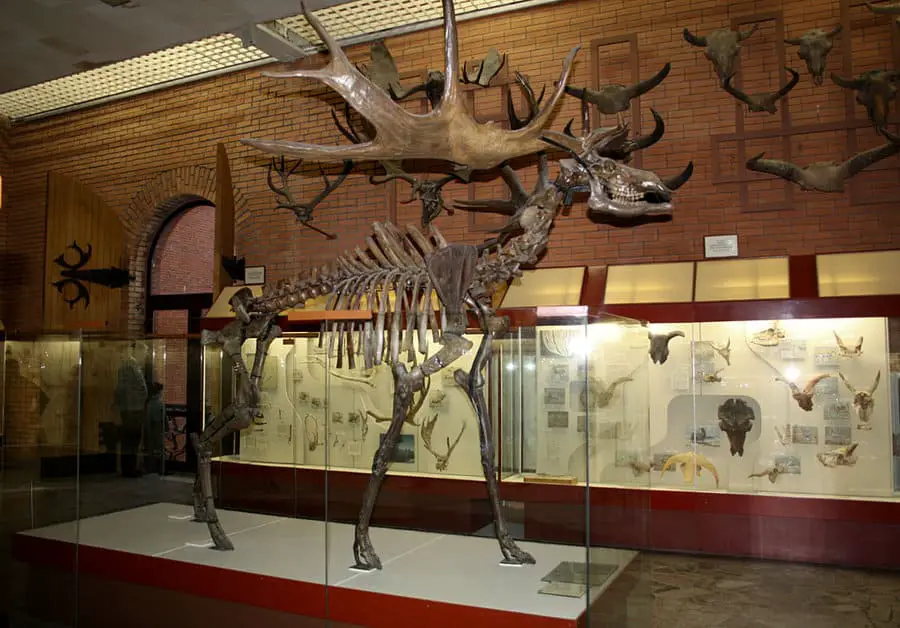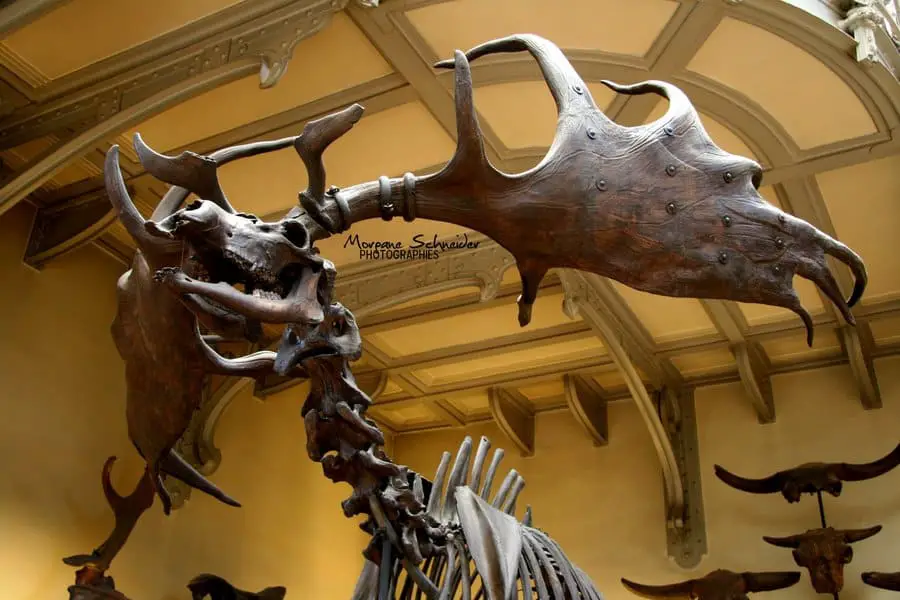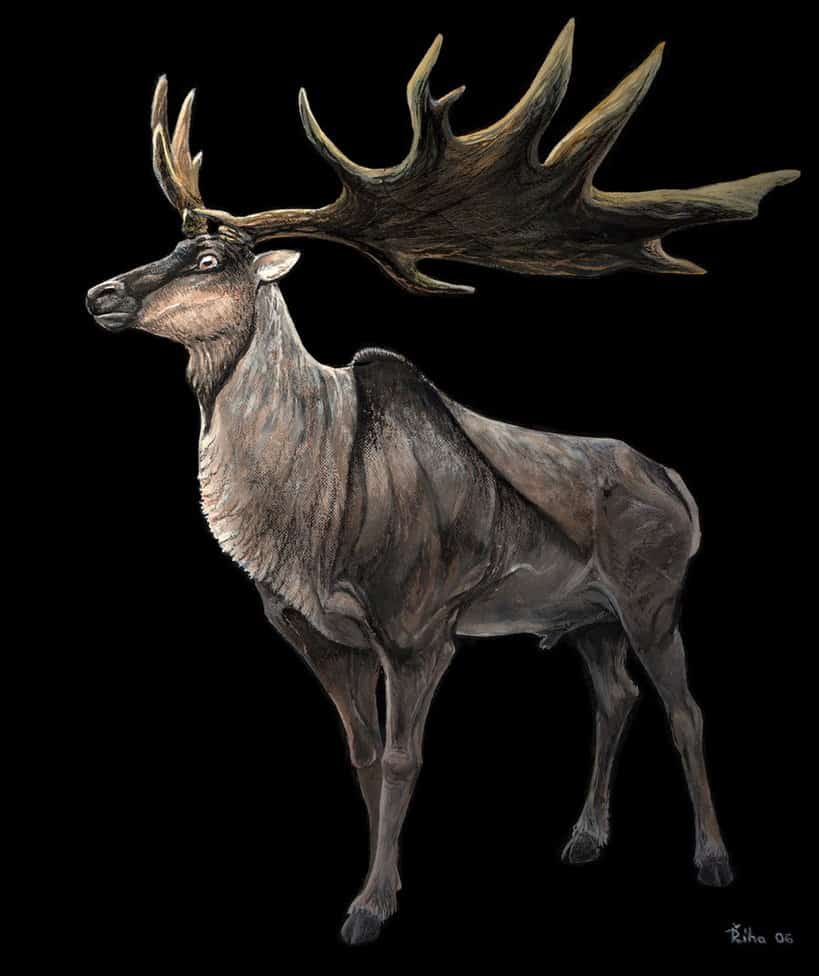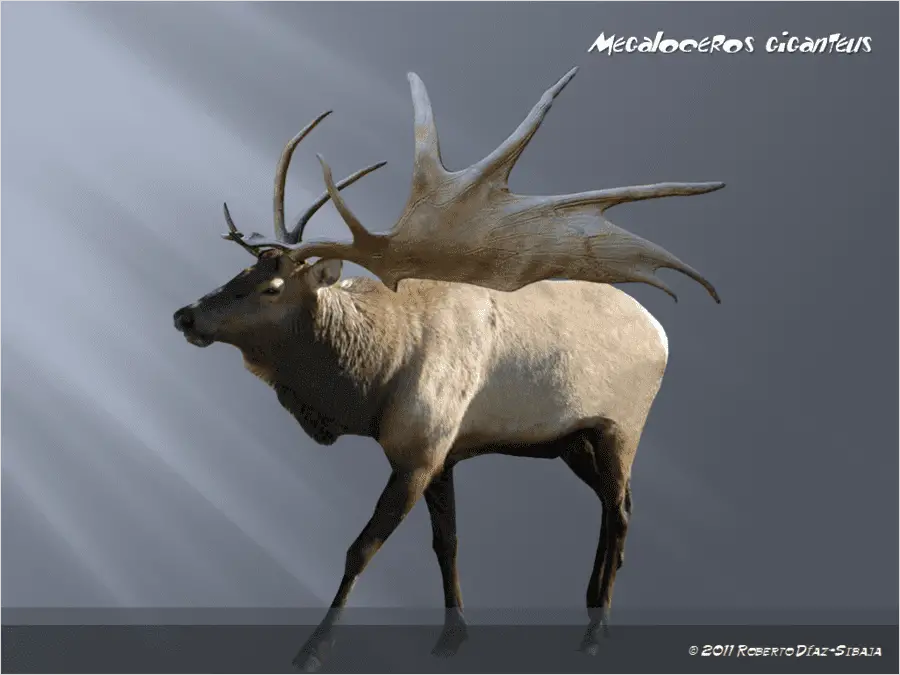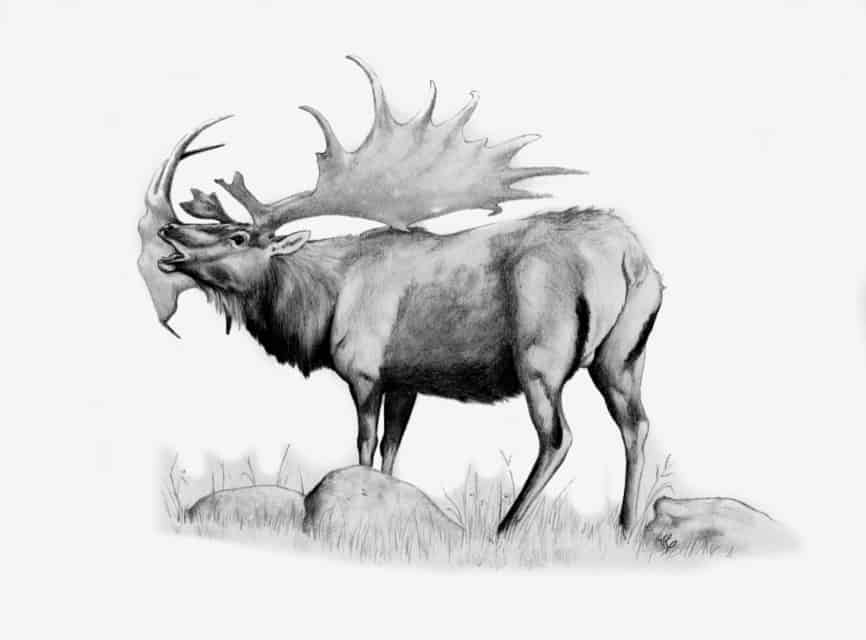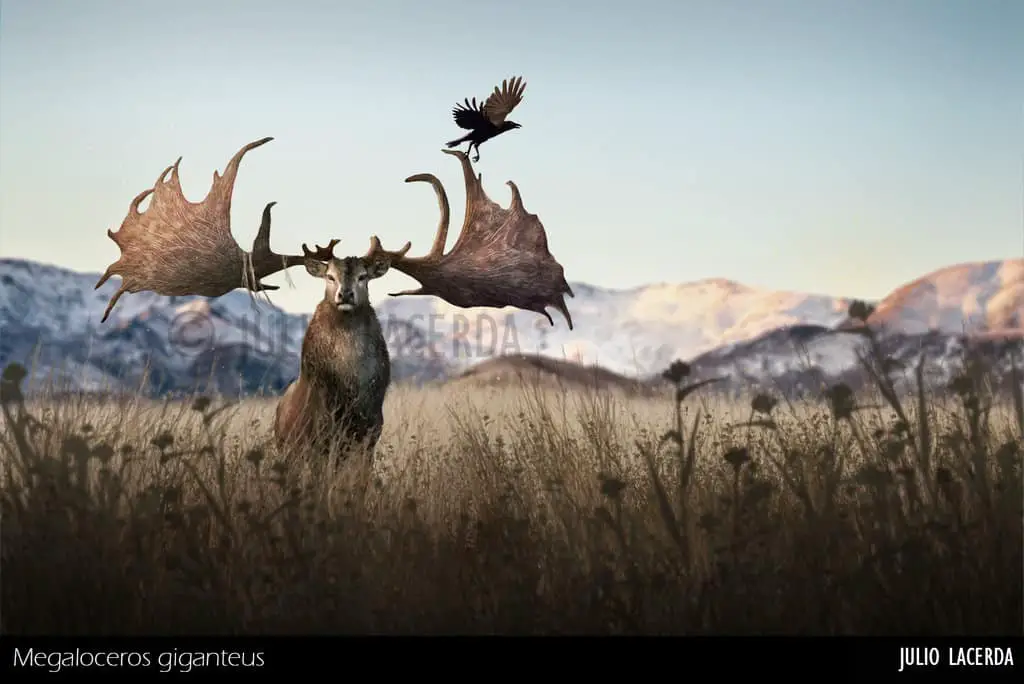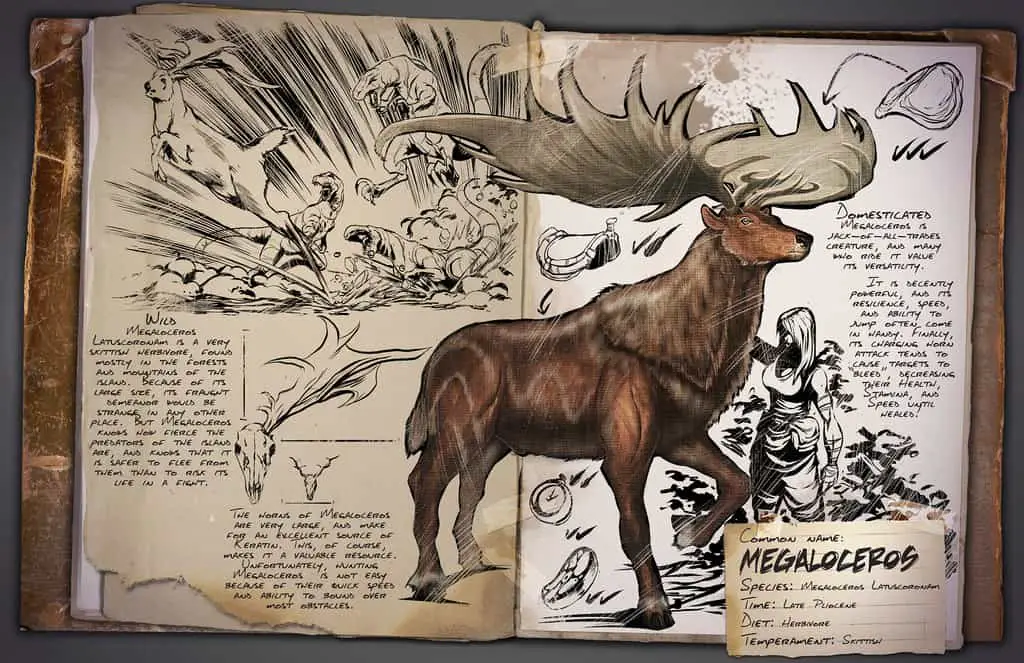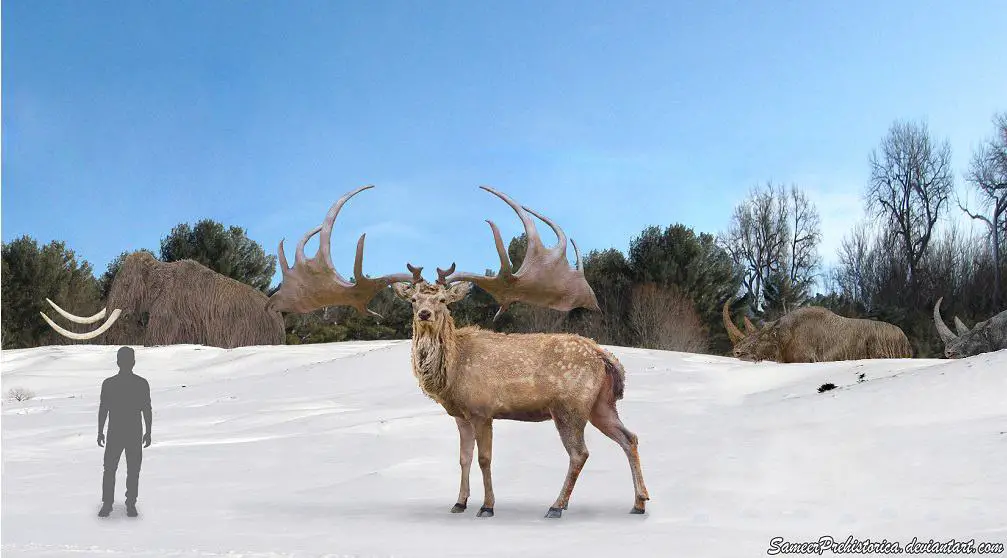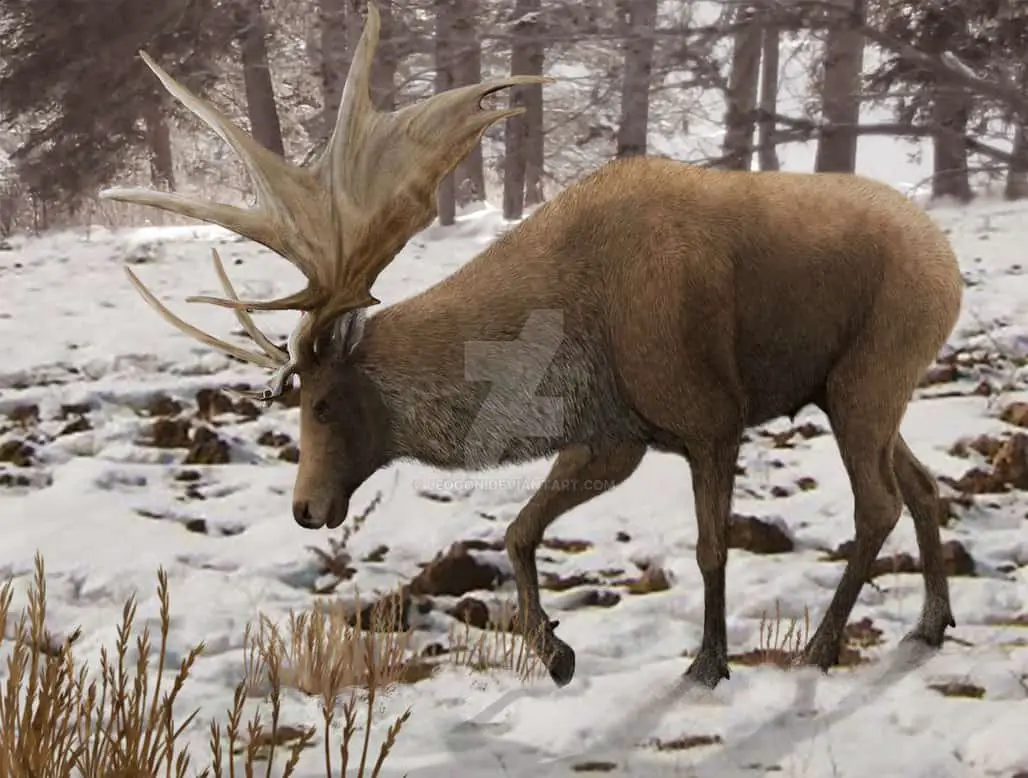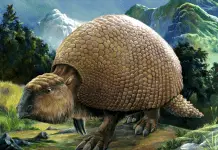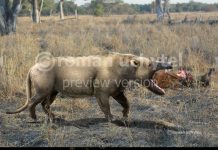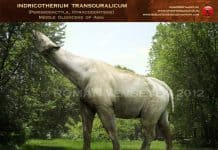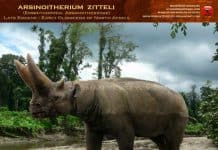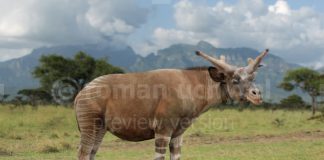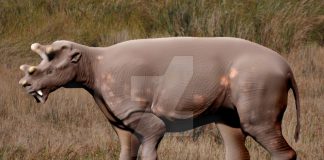Quick Megaloceros Facts
- Lived from the Pleistocene through the Modern Period
- Lived on the plains of Eurasia
- Was as long as an elk
- Weighed as much as 10 white-tailed deer
- Was an herbivore
- Its antlers were longer than a car
About Megaloceros
Megaloceros, also known as the Irish Elk, was a genus of deer which lived approximately 2 million to 10,000 years ago – from the Pleistocene through the Modern Period. It was first discovered during the late 18th century and was named by Johann Friedrich Blumenbach in 1799. Its name means “giant horn.”
The genus of Megaloceros covers 9 distinct species of this genus, but only one of them were as large as small dinosaurs. And that species is Megaloceros giganteus. It is also the one that we will be talking about today.
If you look at Megaloceros pictures, then you’ll quickly realize that this animal looks like an elk with an extremely large set of horns. However, that is not entirely accurate. These mammals had more in common with North American deer than it did with European elks. Another one of the interesting facts about Megaloceros is that it wasn’t exclusive to Ireland either. This deer lived all over Eurasia.
This animal was approximately 8 feet long and weighed around 1,500 pounds. Which is about the length of a modern elk but nearly double the weight of one. Another feature that made it quite different from looking like a modern elk is its antlers. Its antlers were about 12 feet long and weighed around 100 pounds. As impressive as that sounds, their antlers weren’t used for combat, however. They were almost certainly used by the male deer to attract females.
Megaloceros went extinct right at the cusp of the last Ice Age. And scientists aren’t exactly sure why. Some paleontologists have speculated that overpopulation and inbreeding led to a population of Megaloceros’s that were unable to adapt when the climate changed. Other paleontologists believe that mankind hunted them into extinction. Most likely, it was a combination of these two facts which led to the inevitable demise of these majestic looking animals.
